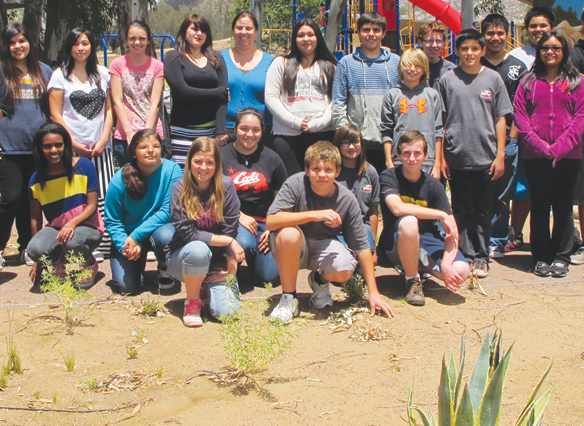Over thousands of years San Diego evolved from tribal Indians and small farming communities into one of the world’s most desirable places to live.
At Barona Valley Ranch and Resort and Casino the fast paced lifestyle keeps most visitors in and out of the doors. Those who live and work there however, are much more conscious of the locations history and its survival.
Recently, the Barona Cultural Center and Museum partnered with 7th and 8th graders from Barona Indian Charter School for a virtual exhibit of wildlife in the area.
Over thousands of years San Diego evolved from tribal Indians and small farming communities into one of the world’s most desirable places to live.
At Barona Valley Ranch and Resort and Casino the fast paced lifestyle keeps most visitors in and out of the doors. Those who live and work there however, are much more conscious of the locations history and its survival.
Recently, the Barona Cultural Center and Museum partnered with 7th and 8th graders from Barona Indian Charter School for a virtual exhibit of wildlife in the area.
Sitting just a half-mile up the road from the casino, the museum is free to attend and holds objects dating back as far as 10,000 years. The Kumeyaay Indians have traces in San Diego and down the coast of Mexico that goes as far back as 12,000 years.
Jennifer Stone, museum assistant, has worked in museums for nine years and at Barona’s museum for more than two. Stone said they hold culture classes for students of all ages.
“The museum paired up with the school for the last four years,” she said. “This is the first time doing the virtual exhibit, in years past they did gardening and murals. We got some help from the Natural History Museum. They showed us the proper way to house ovarian specimens.”
Stone said they received a donation of specimens collected on the Barona Indian reservation in the 70s and early 80s. Stone said the students put the plants on index cards and the goal was to move them using the archival processes that they’re using now in 2014.
“It was a really rewarding project,” she said. “We got to see them grow and learn all the techniques of transferring the plants, gluing them, learning the Latin. We also took them to the Natural History Museum at the end and they got to visit the botany department down there and see how they take care of their plant samples and what they use them for. I think it was eye opening for them to see what they were doing here, is something all the other institutions around the world are doing and they are helping preserve this for their kids and their grandkids.”
John George, the collections manager at the museum, said the kids are not the only ones who are gaining knowledge.
“It’s always a learning process,” he said. “As we learned with the fires that came through here, at different time’s different plants will grow. It’s kind of nice to know that there are a lot of plants out there that were collected in the 1970’s. Through people on the reservation we were able to figure out what they were used for whether it was for basketry or for medicine, stomach aches, cuts and burns. The students learned about that as well learn the Ipai terms, the original language here. What the Kumeyaay named these plants not just the common Latin names we have now.”
Barona Sycuan and Viejas are all Kumeyaay reservations, but there are two separate languages that separate them, said George.
“The Ipai and the Tipai people. The natural barrier is right where interstate 8 is now,” he said. “The northern people are the Ipai and the southern people are the Tipai. Everybody north is related linguistically and same for the south. The Kumeyaay in the south are closely related to those you will find in Baja today.”
George said he hopes the next generation will now have a greater appreciation of their community.
“It’s great, part of the project was to take the old dried up plants and to find them in the wilderness,” he said. “You hope they will have a greater appreciation for what’s around them even as they are walking through the community.”
Every day hundreds of locals flock in and out of the casino on the Barona Indian Reservation, but just off the battered path a hidden treasure of history lies. A history, Stone said, they want to preserve.
“I think it’s really important the things museums have to share to the general public,” she said. “There are things that people don’t often get to see anymore or learn about. Here we are very specific to the Barona people and it’s their history, the way that they would like it to be told. This is something unique that you don’t see in other museums.”














